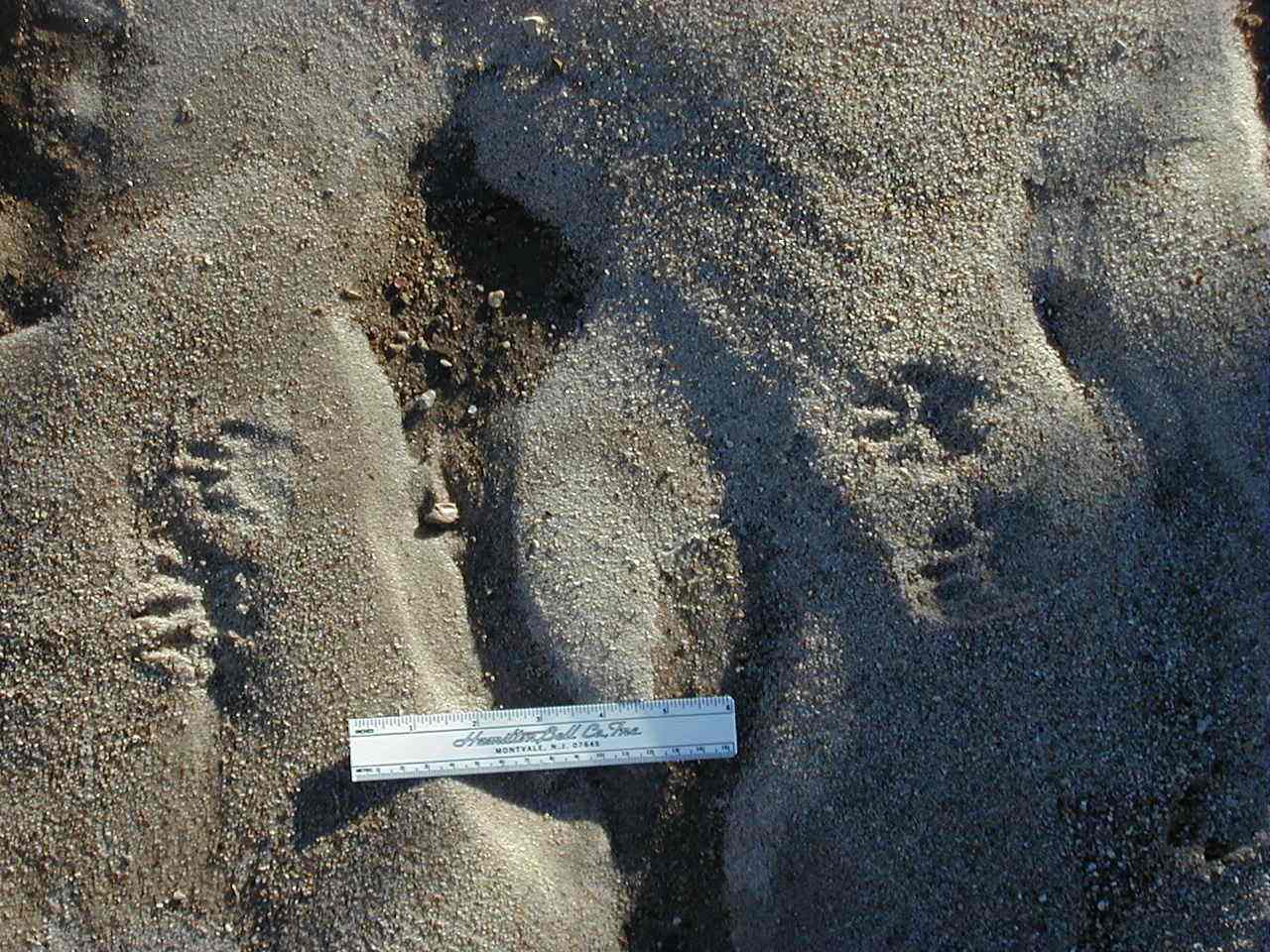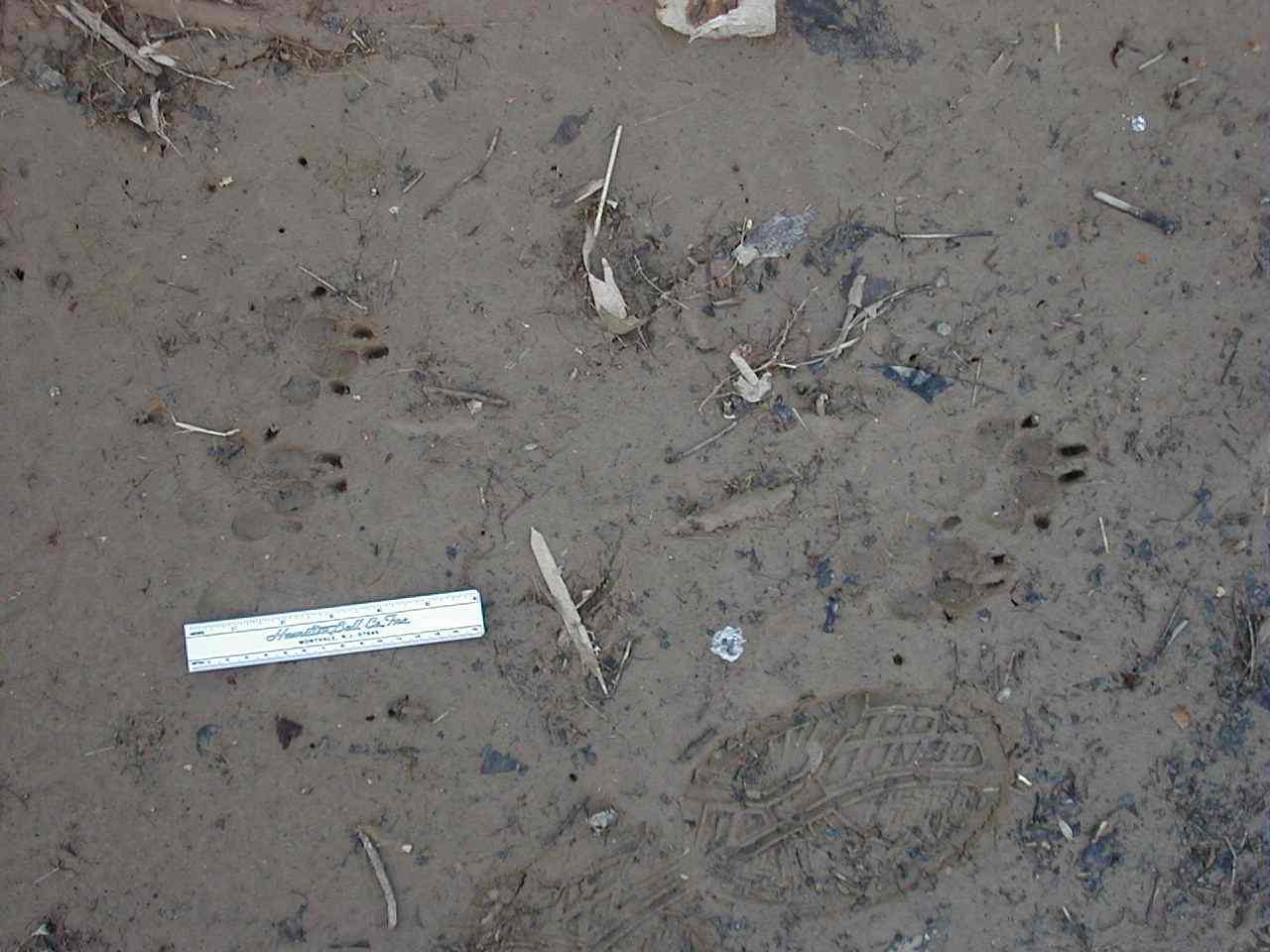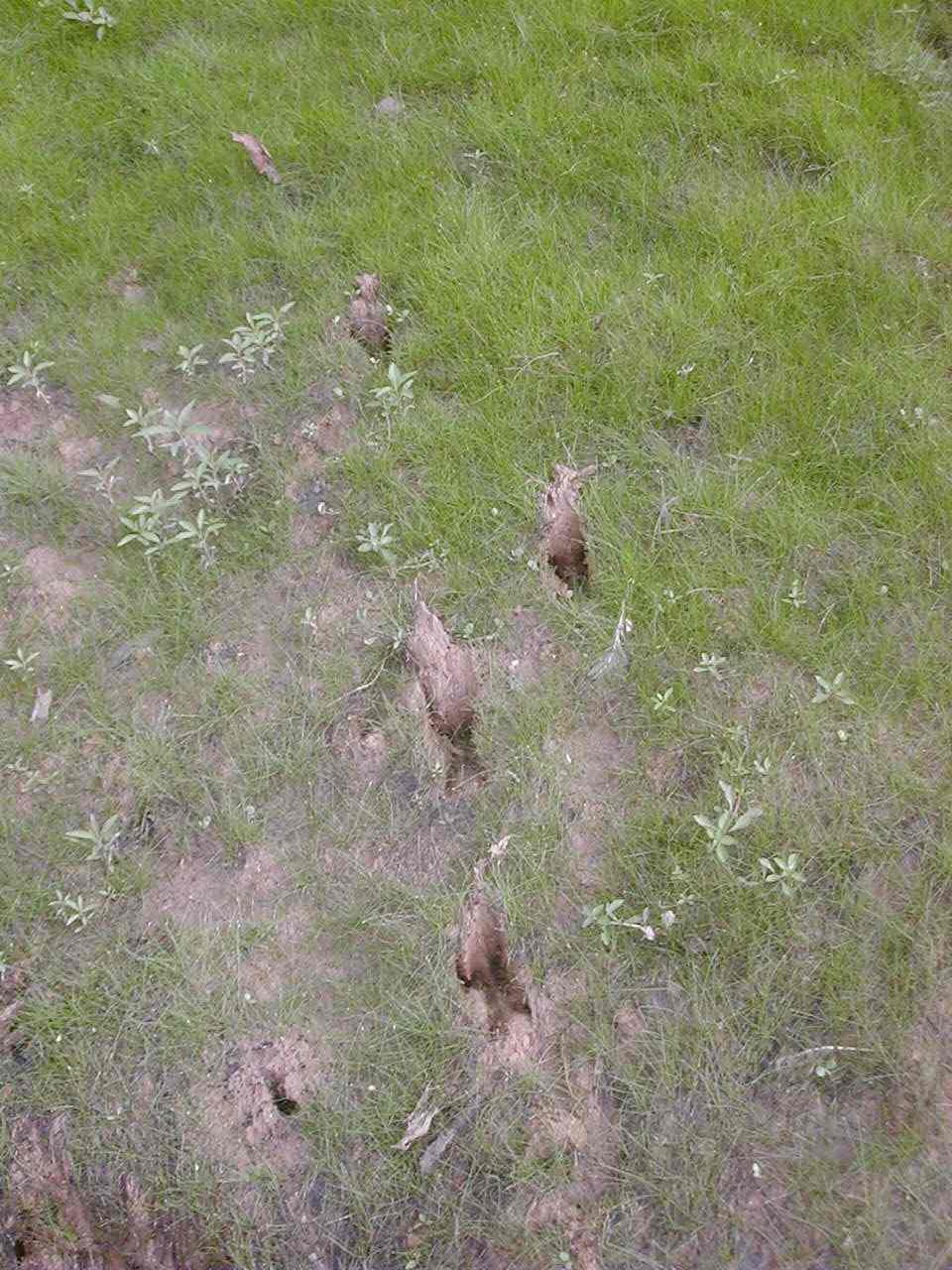This is the LOPE of a northern river
otter (Lutra canadensis). During the lope,
both rear feet are moved almost simultaneously
forward, and then both front feet are moved
almost simultaneously forward. The lope of
some members of the weasel family often
takes on the diagonal shape shown here.

This is the PACING gait of a common raccoon (Procyon lotor). This is also the common gait of bears. Many animals use this gait when moving slowly or when angry.

